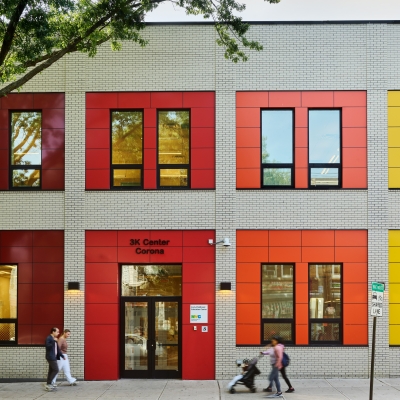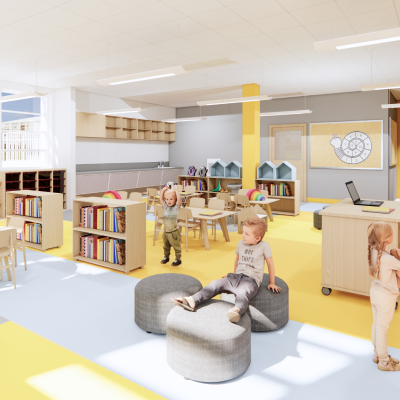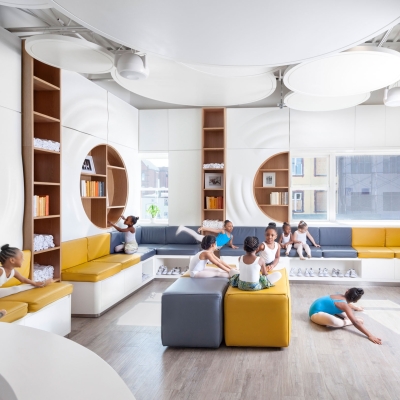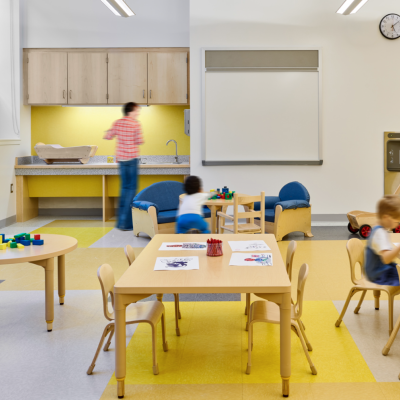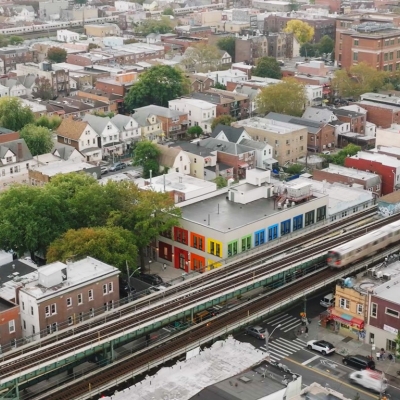Part 2 The ROI of Healthy Sustainable Schools - Design Matters
2025.07.17
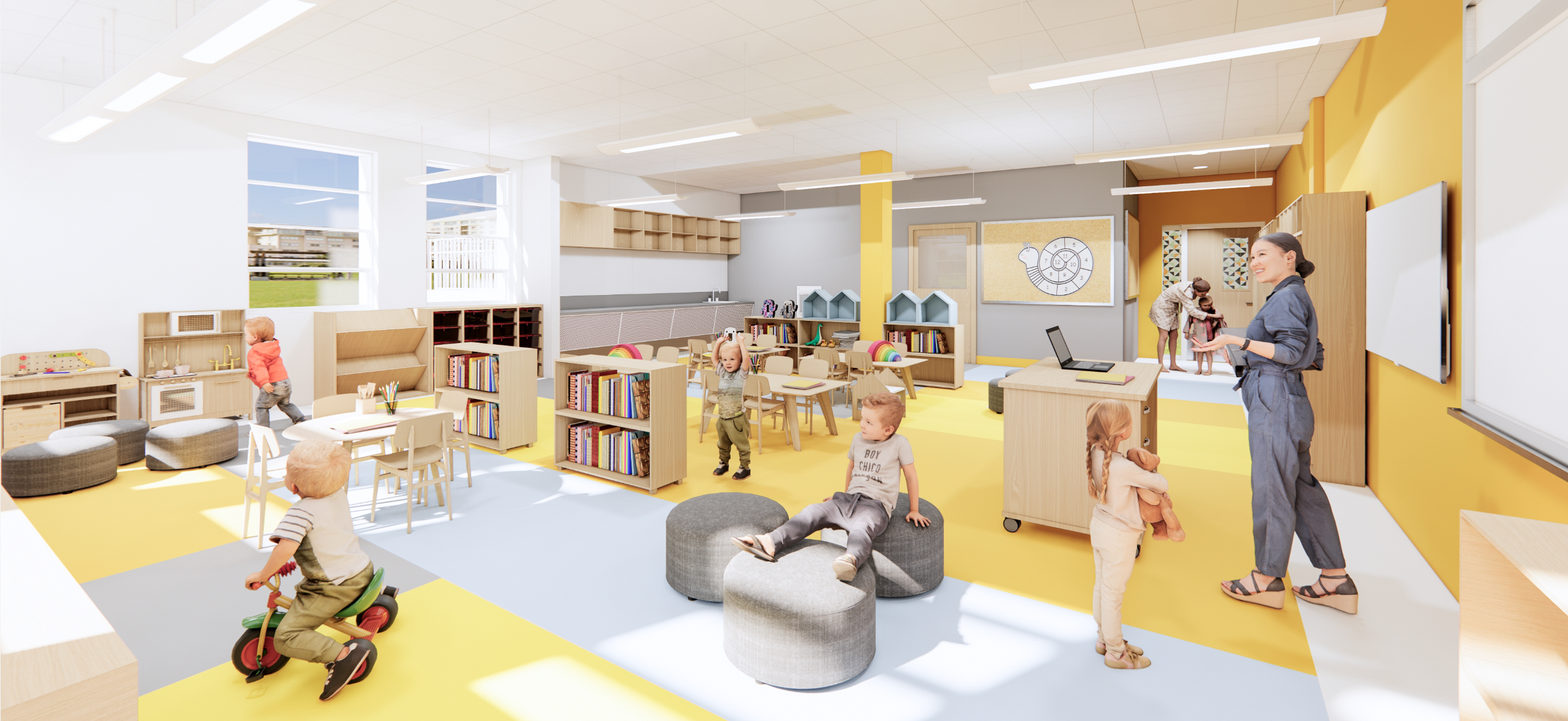
When we think about improving education, curriculum and teaching quality often take center stage. But what if the walls themselves—along with the light, layout, and view outside the window—could help students learn better, feel calmer, and perform more confidently?
Emerging research shows that intentional design, especially when it incorporates natural elements, can directly support student success. From lowering stress to improving attention spans, biophilic and sensory-conscious design strategies are transforming how schools support learning.
Designing for the Mind and Body
Optimizing daylight and controlling glare is much more than just a lighting strategy, but it also helps students focus better and improve test scores. Moreover, when paired with acoustically warm materials and flexible layouts, classrooms become adaptable spaces that can tailor to different teaching styles and learning needs. Nature, whether it is embedded directly or symbolically, helps students thrive during their learning.
What is Biophilic Design?
Biophilia refers to the innate human connection. In design, it is about bringing a connection into the built environment through:
- Nature in Space → direct experiences of nature, such as views of landscapes, living plants, animals, or sunlight
- Natural Analogues → Indirect references to nature through patterns, materials, and forms (like wood grains or biomorphic shapes)
- Nature of the Space → Spatial experiences like open views, a sense of refuge, or dynamic spatial flow
Research showed that these strategies measurably improve physical and mental health, using metrics like heart rate variability (HRV), blood pressure, and cognitive performance.
Biophilic design is profound in schools for several reasons: daylight has been linked to better academic performance, views of nature are more impactful than daylight, and access to nature enhances cognitive development. Moreover, it has been shown that students with daily exposure to nature have higher graduation rates and an increased likelihood of attending college.
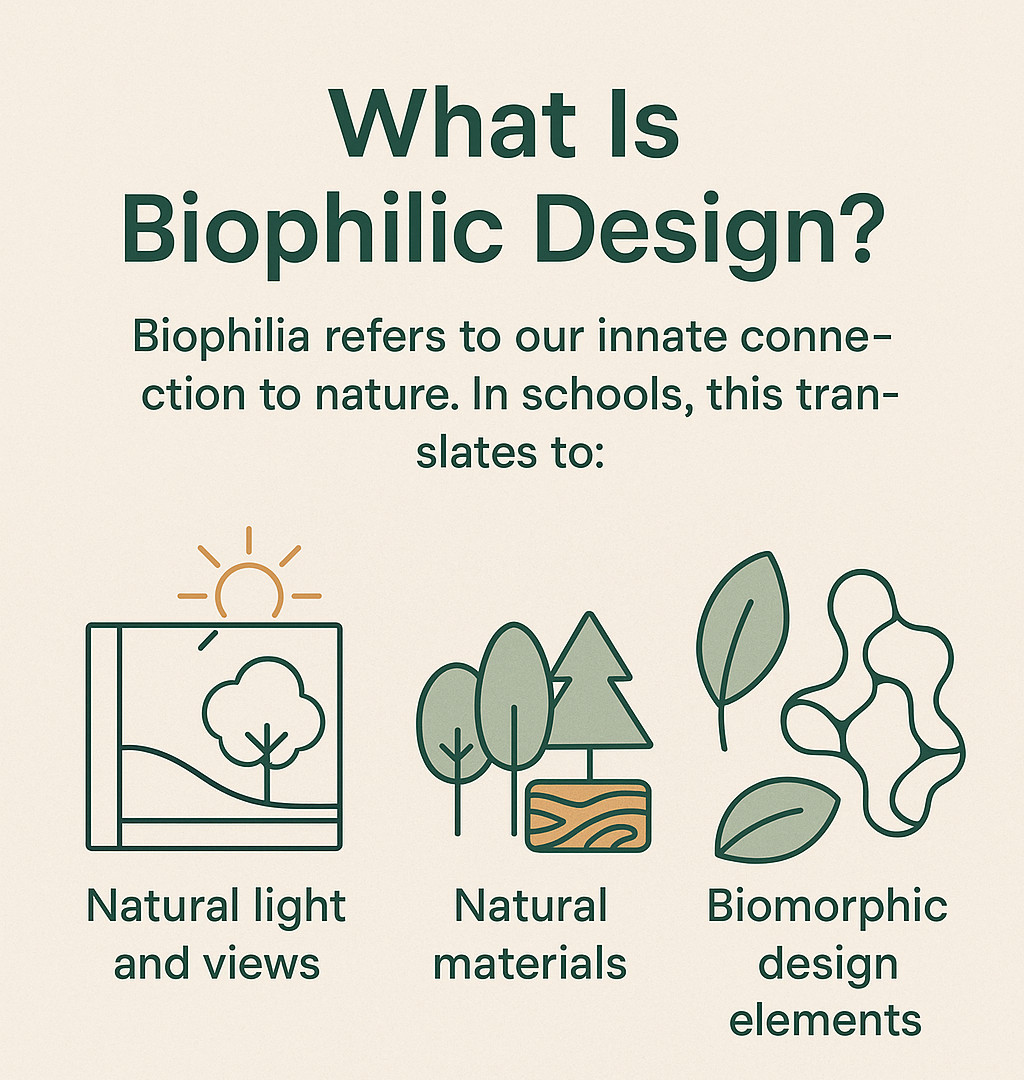
Daylight has been linked to better academic performance, views of nature are more impactful than daylight, and access to nature enhances cognitive development.
Real World Applications
In one sixth-grade classroom, design interventions included tree-facing windows, organic finishes, and blinds that cast fractal-like shadows. Visual clutter was minimized, informed by neuroscience. Students showed increased heart rate variability—a sign of stress recovery—and improved cognitive readiness, especially during spring bloom.
Across the school, sunlit lobbies with wood finishes, nature-inspired motifs, and views from every classroom created a calm, focused atmosphere. Transparent partitions supported psychological safety, and outdoor gardens helped students reconnect with the natural world.
The impact was undeniable: lower absenteeism, fewer behavioral issues, improved academic performance, and stronger teacher retention. Educators pointed to the sense of ease and focus these design choices made possible.
Why It Works: Neuroscience and Nature
According to Attention Restoration Theory, even a brief view of nature allows the brain’s prefrontal cortex to rest, restoring cognitive function and focus. In other words, design doesn’t just shape how schools look, it affects how students feel and perform. Small interventions like adding plants or animal care stations can make a measurable difference in daily experience.
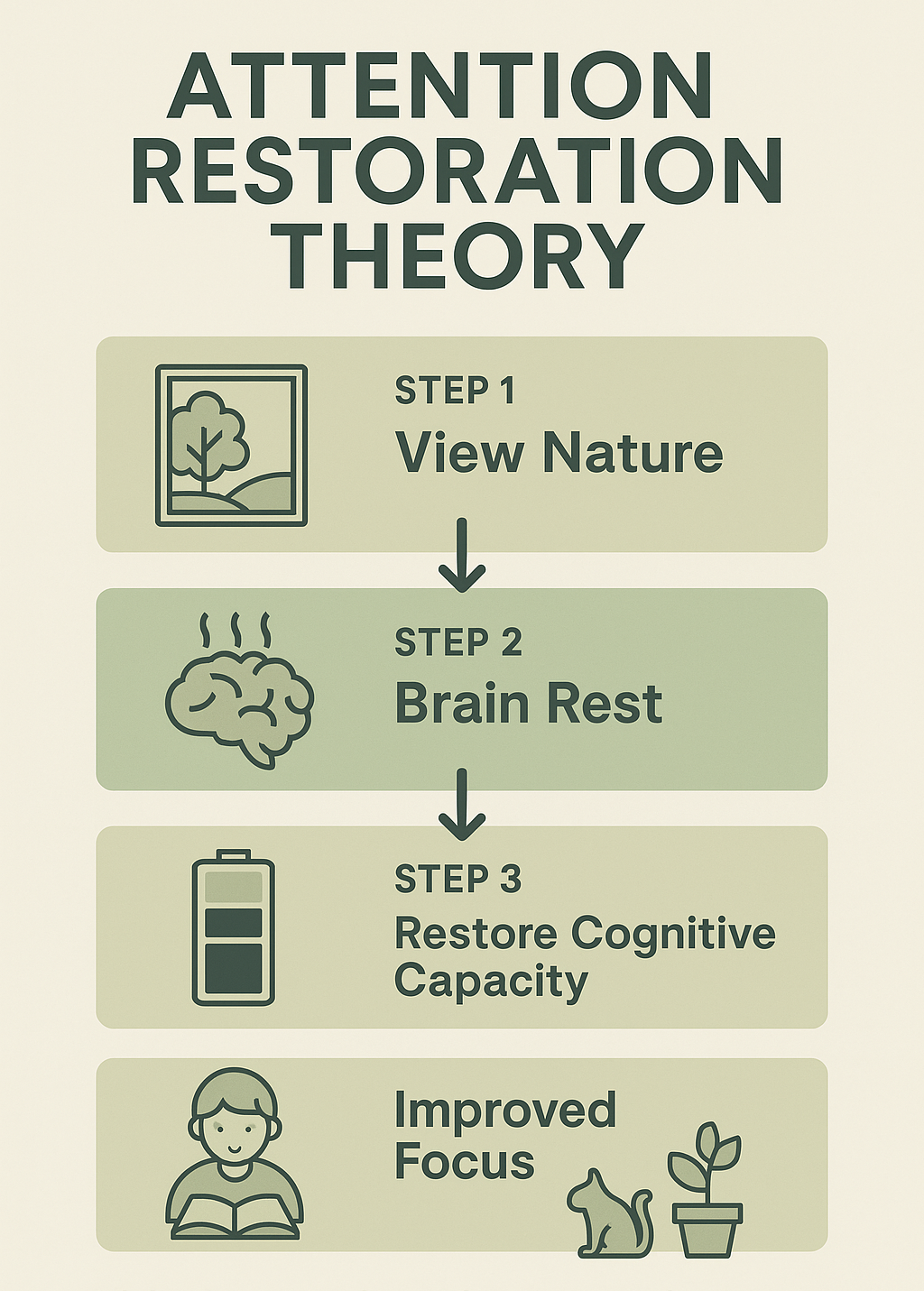
Design is not just about beauty, but it is also about biology.



